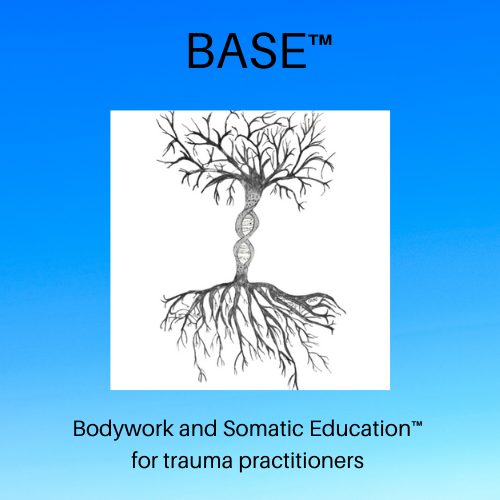Preparing for Surgery or Other Medical Procedures
/(Adapted from Trauma Through a Child’s Eyes by Peter Levine and Maggie Kline)
Preparing a Child for Surgery or Other Medical Procedures
Your presence during the procedure can be helpful if you are not visibly anxious yourself.
Medical personnel may not allow parents to be present for all procedures. It is best to work this out in advance if at all possible so there is no argument in front of the child. Two procedures that can be particularly terrifying to a child are: 1) being strapped down to an examining table, and 2) being put under anesthesia without being properly prepared.
Before the day of surgery:
Be sensitive to the child’s needs.
Prepare the child for what will happen. Tell them the truth without unnecessary details.
Some hospitals have programs that allow the child to visit the hospital prior to the surgery, meet the doctors (or see pictures of them), and do some role-playing. Ideally, the child should at least be shown photographs of what the doctors and nurses will look like with surgical masks on.
Staff and parents can arrange a time beforehand so the child can meet the surgical staff when they are wearing normal attire.
If the hospital does not have a program for child education, you can prepare your child by having them dress up and play “hospital,” going through all the steps in advance.
Prepare the child for entering, and coming out of, an altered state by telling (or making up together) a fantasy story.
Healing from surgical wounds is more rapid when a local anesthetic has been used at the incision site. Make this request in advance of the surgery.
On the day of surgery:
Parents and medical personnel should work out a system by which parents can stay as much as possible with the child.
A child should never be strapped down to an examining table or put under anesthesia in a terrified state.
Ideally, parents should be in the post-operative room when their child is waking up. The child should never awaken in the recovery room alone.
After the surgery:
Rest speeds recovery.
If your child is in pain, have him or her describe the pain, and then find a part of the body that is pain-free, or at least less painful.
If the child appears fearful, assist him by using storytelling, drawing, and other expressive activities.
Preparing an Adult Client for Surgery or Other Medical Procedures
There are a number of things that can be done pre-surgery that will assure that your client has the best possible chance of coming through with minimal traumatization:
Learn about what will happen; determine who can be your advocate or helper at the hospital; learn about what is needed after the surgery (home help, rest time, help with mobility).
Be assertive, so that you are able to ask the doctor all the questions you have so you can make an informed decision.
Identify resources for the O.R. (music, photographs, security blanket/item) – it’s best to clear this with the hospital staff in advance to ensure that any items can be taken into the O.R. to avoid client having these items confiscated at the last minute.
Write down instructions you wish to give surgeon, anesthetist or O.R. staff prior to surgery (asking for reassurances as you go under anesthesia, have surgeon give news of successful surgery immediately, etc.).
Visit the hospital and recovery room prior to surgery. Minimize surprises.
Become accustomed to going in and out of altered states of consciousness. Practice letting go into the anesthesia without activation.
Let’s discuss other surgeries you have had and renegotiate them if there is time. However, if the upcoming surgery is an emergency or is set up for the near future, we will work on relaxing, anchoring yourself and preparing in other ways.
Requests for the surgery itself:
Preemptive anesthesia - Preemptive anesthesia means that in addition to the general anesthesia, the patient is given a local anesthetic at the site of the incision. This has been shown to greatly diminish post-operative pain.
Some hospitals can arrange for you to receive Reiki immediately before and after getting anesthesia. Ask about this.
If possible, bring an mp3 player with music you choose to listen to—calming and relaxing
Request that any talking in the operating room be reduced to the necessary and positive or neutral—thus reducing the possibility of complications from the fact that the patient’s unconscious, at that time is highly open and suggestible.
If at all possible, arrange to be accompanied by someone that you love and trust, someone who can help you stay calm.
At the time anesthesia is administered
In the recovery room (the time when you first wake up)
If you have a friend who is a doctor or a nurse this is best—it may even be possible for the friend to be present in the operating room.
Some clients have taken advantage of this supportive presence and the highly suggestible quality of the anesthetized state to come up with a list of positive suggestions, and have their friend read them aloud during the surgery.
In the recovery room, when the patient is emerging from the effects of the anesthesia, you may tremble, sometimes with considerable intensity. This is one of the very best things that can happen as it allows for the discharge of the activation from the surgery. However, standard medical practice is to medicate the patient at this time, because both patients and doctors tend to be afraid of the trembling. Some education about this before the surgery can create the space for this naturally healing response of the body to occur in peace.
Pre-schedule an appointment for after the surgery. That way you will know there is immediate help for any lingering after-effects.


